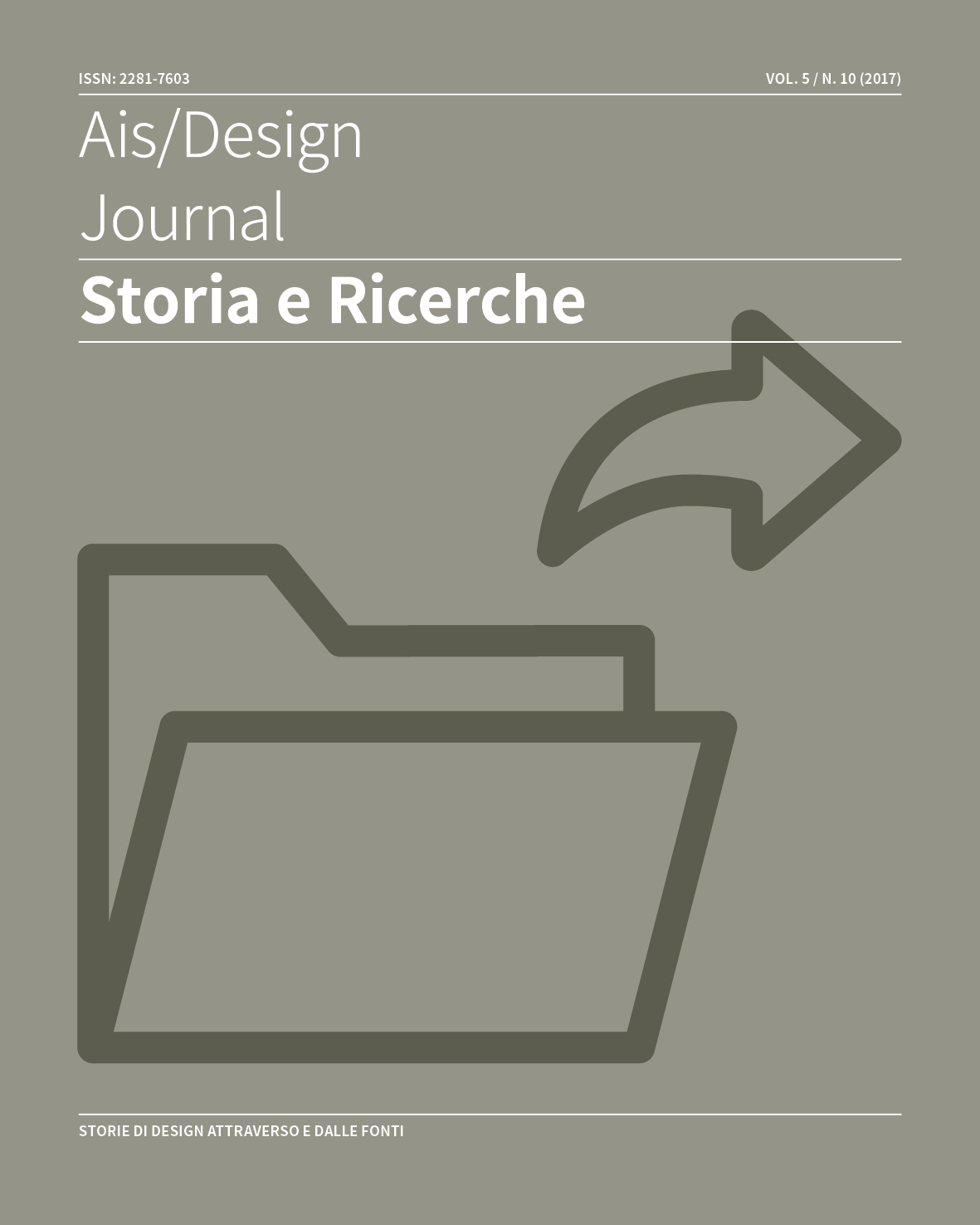Historical Research Process and Considerations on Primary Sources in the Case of Gino Sarfatti – Arteluce
Abstract
This article is a critical account of the process and modes of a research study conducted by the author and dedicated to the entrepreneur and designer Gino Sarfatti and to his lighting manufacturing company, Arteluce. Despite its relevance at the moment of its development, this story – which took place in Milan between the late 1930s and the first half of the 1970s – has mostly been overlooked since the company closed in 1974. Twenty years later, in 1994, the author had the opportunity to begin exploring Arteluce and Sarfatti’s work in greater depth: begun within the context of her MA thesis, this exploration developed into the publication of a long article and finally, in 2012, of a monograph. At a distance of several years, the research into the case of Sarfatti-Arteluce gives the author an opportunity to reflect on the use of sources. On the one hand, the article discusses several issues concerning the use of oral history and information pertaining to collecting practices; on the other, it considers the use of the digitization process and its relevance to the work of the design historian.
Copyright (c) 2017 Paola Proverbio

This work is licensed under a Creative Commons Attribution-NonCommercial-NoDerivatives 4.0 International License.
Creative Commons NonCommercial-NoDerivates 4.0 international License (CC BY-NC-ND 4.0).


